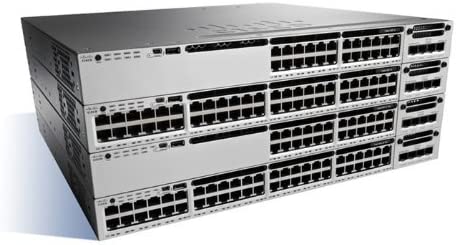A Layer 3 switch is a special network device that has the functionality of a router and a switch combined into one chassis. It works in our network by simply allowing connected devices that are on the same subnet or virtual LAN (VLAN) to exchange information at lightning speed, just like a switch that operates in the data link layer of the OSI model, but it also has the IP routing intelligence of a router built into it.
It can inspect incoming packets in the network layer, support routing protocols, and even make routing decisions based on the source and destination IP addresses. With both its Layer 2 and Layer 3 capabilities, this device is popularly known also as a Multilayer Switch. Just be mindful that Layer 3 switches do not have WAN ports which should be considered while designing your network.
How do Layer 3 Switches function in the Network?
Layer 2 switch dynamically routes traffic between its physical interfaces according to the MAC addresses of the connected devices, wherein Layer 3 switches use this feature to manage traffic in a LAN. A Layer 2 switch functions well in low to medium traffic in its VLANs, but these switches have their limitations once traffic increases.
The Layer 3 switch was conceived to augment this limitation by developing equipment that has routing capabilities within the same chassis. The hardware is where the main difference lies. Layer 3 switches have a mix of traditional switches and routers, except for the fact that the router’s software logic is replaced by integrated circuit hardware to improve its performance further.
Layer 3 switches can perform on the OSI model’s Layer 2 and Layer 3. The Layer 3 switching functionality can take either of two forms:
- Cut-through switches – will only look into the first packet of a series of packets to determine its logical Layer 3 destination IP address and then shift the remainder of the packets in the series using the MAC address leading to higher data throughput rates.
- Packet-by-Packet Layer 3 (PPL3) switches – will look into every packet to determine its logical Layer 3 destination IP address. A PPL3 switch basically functions as a high-speed router with the routing functionality built into its hardware instead of software. Similar to routers, aside from forwarding packets to their destination, PPL3 switches perform other functions that a standard router accomplishes, such as using the packet’s checksum to verify its integrity, updating the packet’s Time to Live (TTL) information after each hop, and processing any optional information in the packet’s header.
In addition to performing Layer 3 switching functions and routing functions, these switches perform the Layer 2 switches functions, such as bridging functions, at each switch interface. You can group switching interfaces in various ways to allocate bandwidth and contain broadcasts, which makes Layer 3 switches a powerful, scalable technology for building high-speed Ethernet backbone networks.
L3 Switch Benefits
Layer 3 switches were developed to provide the network with the following advantages:
- Better fault isolation and traffic segregation
- Simplify security management
- Reduce broadcast traffic volume
- Easier VLAN configuration process
- Support Inter-VLAN routing
- Separate routing tables
- Reduce effort and time in troubleshooting
- Support flow accounting and high-speed scalability
- Lower network latency
Download our Free CCNA Study Guide PDF for complete notes on all the CCNA 200-301 exam topics in one book.
We recommend the Cisco CCNA Gold Bootcamp as your main CCNA training course. It’s the highest rated Cisco course online with an average rating of 4.8 from over 30,000 public reviews and is the gold standard in CCNA training:

